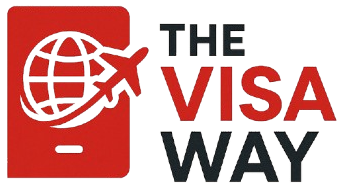Have a question
J-1 Visa
Key Features and Purpose
Cultural Exchange: The J-1 visa is administered by the U.S. Department of State under the BridgeUSA initiative. It’s designed for temporary stays to foster educational and cultural exchange, not permanent immigration or typical employment.
Sponsorship: All J-1 applicants must be accepted into an approved Exchange Visitor Program, which is managed by a designated U.S. government, academic, or private sector sponsor organization. This sponsor issues the critical document, Form DS-2019.
Non-Immigrant Intent: As a non-immigrant visa, applicants must demonstrate to a consular officer that they have strong ties to their home country and intend to return after their program ends.
J-1 Exchange Visitor Categories
The J-1 visa encompasses a wide variety of program categories, each with its own duration limits and specific requirements. Common categories include:
Students: For participation in academic or vocational degree programs or non-degree study at U.S. schools and universities.
Short-Term Scholars: Professors, research scholars, or persons with similar education coming for short-term visits (maximum six months) for research, lecturing, observing, or consulting.
Professors and Research Scholars: For teaching, lecturing, observing, or conducting research at a post-secondary institution. This is a longer-term category, typically up to five years.
Trainees and Interns: For structured training or internships in fields like business, technology, finance, or other professional areas.
Au Pairs and Camp Counselors: For participation in cultural and childcare or summer camp programs.
Specialists: Experts in a field of specialized knowledge or skill coming to observe, consult, or demonstrate skills.
Physicians: Foreign medical graduates participating in U.S. graduate medical education or training.
Essential Requirements for Eligibility
To be eligible for a J-1 visa, an applicant must:
Be Accepted by a Sponsor: Must be accepted into an approved Exchange Visitor Program and possess a valid Form DS-2019, titled “Certificate of Eligibility for Exchange Visitor (J-1) Status.”
English Proficiency: Must possess sufficient proficiency in the English language to function successfully in the program.
Sufficient Funding: Must have documented financial resources to cover their stay, including tuition, fees, and living expenses.
Health Insurance: Must maintain specific U.S. Department of State-mandated medical insurance coverage for themselves and any J-2 dependents for the entire duration of the program.
The Two-Year Home Country Physical Presence Requirement (212(e))
A critical component of the J-1 visa for some participants is the Two-Year Home Country Physical Presence Requirement, or Section 212(e). If this requirement applies, the J-1 holder and their J-2 dependents must return to their country of nationality or last legal residence for an aggregate of two years after their program ends before being eligible to switch to certain U.S. visas (like H-1B, L, or K) or apply for permanent residency (Green Card).
An exchange visitor is subject to the 212(e) requirement if any of the following apply:
Government Financing: They received funding, either directly or indirectly, from the U.S. government or their home government for the purpose of their exchange program.
Skills List: Their field of expertise or specialization is on their home country’s Exchange Visitor Skills List (a list of fields their government needs skilled personnel in).
Graduate Medical Education/Training: They participated in a program to receive graduate medical education or training.
Waivers of this requirement are available in specific, limited circumstances.
Application Process
The J-1 visa application process generally involves the following steps:
Obtain DS-2019: The designated program sponsor issues the electronic Form DS-2019 after the applicant is accepted and all necessary documentation (e.g., funding proof, English proficiency) is submitted.
Pay SEVIS Fee (I-901): The applicant must pay the I-901 SEVIS (Student and Exchange Visitor Information System) fee, which is required to track the status of exchange visitors.
Complete Visa Application: The applicant completes the online Nonimmigrant Visa Application, Form DS-160.
Visa Interview: The applicant schedules and attends an interview at a U.S. Embassy or Consulate, submitting the DS-2019, SEVIS fee receipt, DS-160 confirmation, passport, and other required documents. The consular officer determines whether to issue the J-1 visa stamp.
Entry to the U.S.: The J-1 visa allows the applicant to travel to a U.S. port of entry, where a U.S. Customs and Border Protection (CBP) officer makes the final decision on admission and duration of stay (indicated by the notation “D/S” or “Duration of Status” on the I-94 record).




